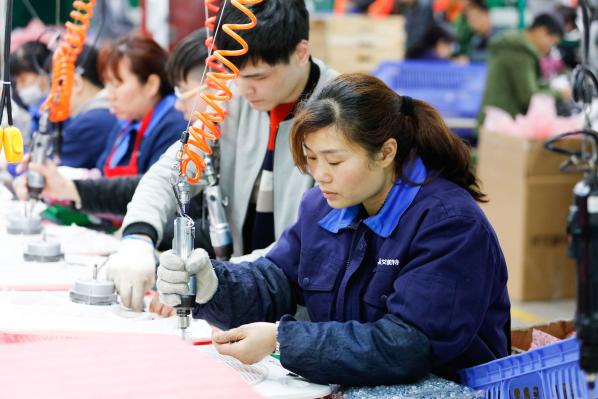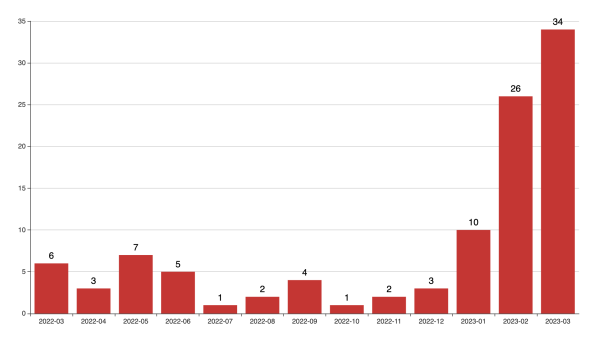
Photograph: humphery / Shutterstock.com
CLB’s March 2023 map data shows that as China’s factories lay off workers and relocate, workers are protesting over the terms of these arrangements. A pattern of disguised resignations means companies can avoid their regular responsibilities for paying workers economic compensation in the event of layoffs and shutdowns under China’s Labour Contract Law.
But first, don’t miss the content CLB has published recently:
- Over a hundred workers at foreign shoe supplier go on strike in Hunan. On 16 February, Kaisheng Shoe Factory workers in Hunan province went on strike over layoffs and owed wages, and police were dispatched to the scene. Meanwhile, the local government had recently praised the factory for its “inspiration” to the city, and the local trade union organised empty International Women’s Day activities and political sessions rather than understanding the needs of workers and representing them in the face of ongoing layoffs. Kaisheng supplies international brands, including Nike and Crocs, which should take steps to understand workers’ conditions and concerns and operate their supply chains responsibly in light of China’s changing economic environment.
- After heated worker negotiation at electronics giant Gome, union reveals it had no contact with ordinary workers. Workers at one of China’s largest electrical appliance companies, Gome, have been laid off and some were not paid wages since July 2022. About a hundred Gome employees went to the company headquarters in Beijing on 5-6 December 2022, blocking the office and leading to physical confrontations with management, which were mediated by police. The incident at Gome reflects changes in China’s economy, as traditional retailers struggle in the new e-commerce landscape and with changed consumer behaviours as a result of the pandemic. China’s trade unions at all levels, from the enterprise up to the national level, should be prepared for an increase in labour rights grievances when massive domestic companies with holdings in various sectors face financial difficulties.
- Migrant courier dies from overwork in Beijing, local unions cite jurisdictional constraints in helping platform economy workers. Zhao Wutao died from overwork in the lead-up to China’s annual November shopping holiday, delivering 566 packages in a single day. But the process of establishing this as a work-related accident for his family to receive compensation is an uphill battle, and none of the unions CLB reached out to were willing to help. In the midst of an expansion drive, China’s official union has said it wants to be the first stop for workers in difficulty, so that “when they have a problem, the first thing they think of is the union.” But for workers in the decentralised platform economy, the question is often far more basic: which union can and will take responsibility to help them? The answer is often, none.
- March 2023 labour news roundup: Demographic and economic changes lead to labour market mismatches. In this edition: Demographic changes affect once-stable education jobs; food delivery rider job market is becoming saturated; drop in foreign trade creates manufacturing job shortage in China’s coastal regions; older, rural workers migrate to cities for work but cannot find jobs.
CLB data analysis
CLB’s Strike Map recorded 121 incidents in March 2023, up from 104 in February. Of the total, 29 percent were in the manufacturing industry, up from 25 percent last month and 12 percent in January. In 2022, less than 5 percent of incidents were in this sector, with construction accounting for almost half, and services and transport each logging about 20 percent.


